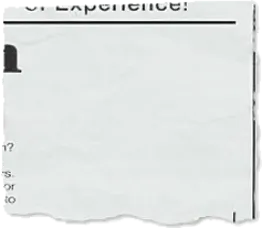

There are more than enough articles floating around with ‘Expert SEO tips and Tricks’, or ’10 things you must be doing to optimise your site’. But who really has the time to read all that, let alone consider compiling an SEO strategy that works?
It’s easy to find online resources for upskilling yourself. But if we look at what aspect of SEO makes the biggest impact and has the most applications of all – we have a clear winner.
Content. Content is king. But not just any content. High-quality blogs, articles and guides serve an actual purpose has proven time and time again to be the best way to make a user’s experience on your site worthwhile. Not only that. By creating high quality content, you’ll be achieving so much more than having one or two fillers on your blog section.
How do we do this?
- Answer questions that are actually being asked. Nobody cares about “why Waitrose is green”, but they probably do care about “why Waitrose is so expensive”. Answer them. Maybe even tell them what’s so special about Quail eggs. Google Trends will give you a great idea on what people really want to know about.
- Google’s watching. They’ll notice you if you put in the effort – flirt with them and get them to pay attention to you for the right reasons and they’ll keep sending drinks over to you (in the form of more site visitors at least).
- Gated = hated. Give your readers something for nothing, don’t lock up your best assets as gated content. Freely available content is going to get your traffic up and build your brand reputation while you sleep.
Then look at the when, the where, the who, the what and the why.
When do I start?
Start now. Some companies like to create hordes of content and only release it as and when they see the need. This can be damaging in many ways.
Bear in mind that each time you research a topic, Google starts to consider the pages you land on as authoritative. As more people start researching the same topic, the first site off the mark with actual content which answers a question is going to start being indexed. So that blog you researched and wrote so astutely is going to get out quickly – but by a competitor.
We’re not suggesting you rush to compile sub-par articles or blogs – but we are saying you should compile and publish as soon as you can. Stagger your social promotion if you must, but the early bird really does get the worm in this case.
Where do I find topics?
We’ve got to get into Google’s mind here. See yourself as a user – type in some queries you think people might be searching around your product or service. You’ll quickly see who’s providing answers, what type of answers they’re giving and what else they’re asking. AlsoAsked.com is a pretty decent way to get related topics and especially useful for first-timers.
Highlighted at the bottom of the results page, you’ll find related questions and alternative phrasing to your original search. Also, the section “People also Ask” is an absolute goldmine. This gives you a really good idea for topics you can cover, that you can eventually link to other pieces as you start to expand your content library.
When you use an agency, they should be conducting an SEO audit on your website as protocol. They’ll handle the crappy aspects you might not have time for – like URL structure and indexation issues. But they’ll also conduct keyword research and find content gaps in what you already have on site. This gives you the golden ticket of where to focus your future topics on to answer questions for people who are actively looking for a solution.
Who should I write for?
Write your content for every type of customer you can imagine. Use the tone of voice you’d typically use in a conversation – not everyone wants to have Thesauraus.com open in another tab just to understand your blog. If your audience wants answers, they need to be able to reach you and actually understand what you’re saying.
Using natural language is important enough to have an API processor in place to recognise it – so you should hold it in high regard, too.
Write for the person who has a problem. A problem your product or service could fix – and they might not know about yet.
Write for the person who’s using a competitor’s product or service and isn’t having their needs met.
Don’t write solely for Google rankings – that’s setting you up for failure. Yes, you want to incorporate keywords into your blog and structure some titles, but not to the point it reads like Alexa trudging through a novel. “The Best Top Ten Anti Dryness Moisturising Face Mask Sheet Masks With 5-Star Reviews”.
Actual humans searching something vaguely representative of that might search “Moisturising face masks reviews”, “Sheet Face masks vs Clay Masks” or even “Top Ten Face Masks” at most.
Play around with these ideas and create unique content on each topic – don’t pile it all into one messy article. Google will love you more for this than it ever could when trying to decipher what your headings mean.
What types of content are easiest to create?
Unless you have a dedicated content exec or you’re using an agency, chances are you’ll be pressed for time in which to write compelling content. The best strategy here is to start small. Write a blog to address the queries you found in your topic research phase, one by one. Eventually, when you’ve published a handful of shorter blogs on the same topic, you can merge them into an ultimate guide.
Blogs are the quickest and easiest content formats to understand and to follow. If you’re an expert in your brand or service – it’ll be easy for you to explain a topic in an expert way. Guides can build themselves over time, as we mentioned earlier.
Infographics are great, as are videos and GIFS – but they will rarely yield the same results as quality content would. We’d always suggest written content to be the first step in getting your SEO on track.
Why this works
- You’re satisfying google.
- You’re opening a gateway for people to find you and interact with your site and content.
- Google likes this interaction, so they bump your article up.
- More people find your content.
- More people visit your site.
- Other sites want to link to you.
- Google loves these inbound links and bumps up your whole domain authority.
- More web traffic. More leads. More sales. More customers.
- An easier process for the sales team to upsell.
- More sales.
We’re here if you want to chat.










